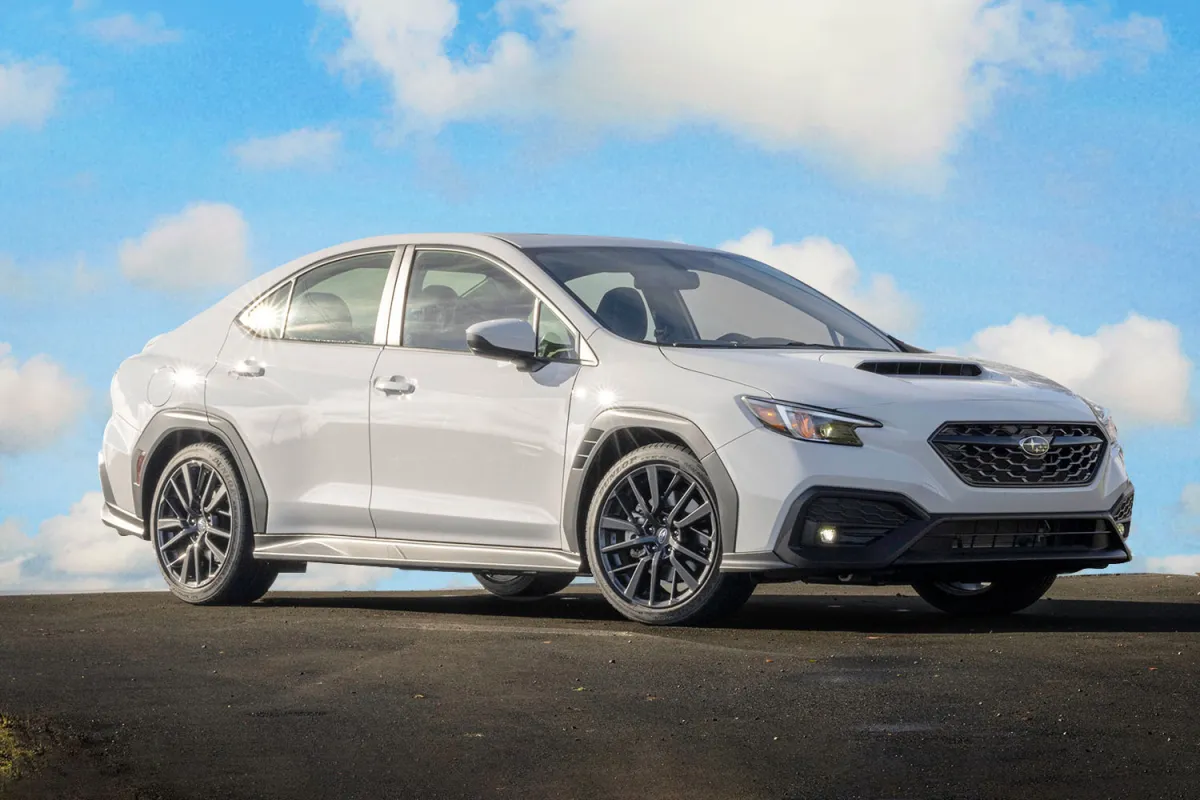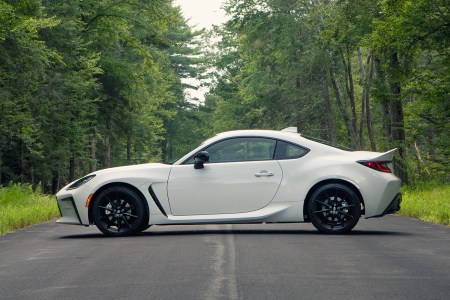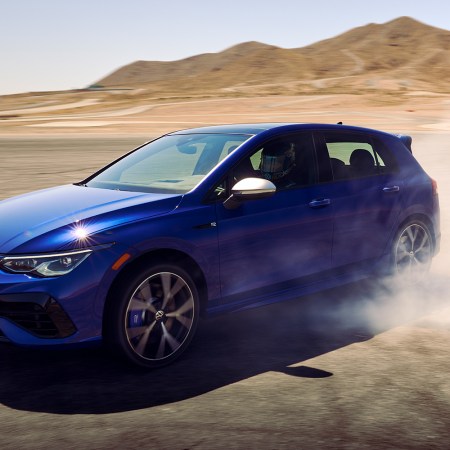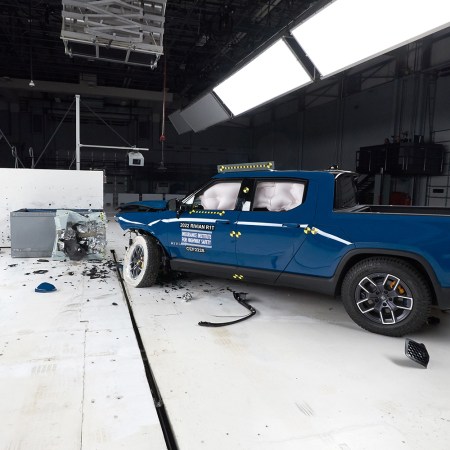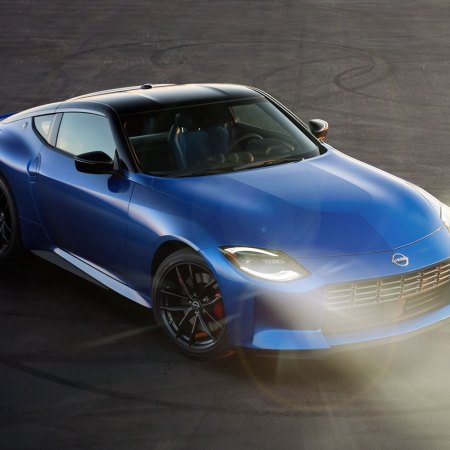| Vehicle: 2023 Subaru WRX with Subaru Performance Transmission | Starting Price: $30,605 MSRP ($32,455 with SPT) |
| Pros: Choosing the SPT option also adds safety features, slightly quicker 0 to 60 mph time | Cons: SPT dilutes what should be a thrilling driving experience, slightly worse fuel economy |
It’s a tough time to be a performance-car purist, especially if you work on an automotive design team. With so many requirements regarding safety and efficiency imposed both by federal regulators and nonprofit industry-movers like the IIHS, combined with the perceived need to stuff new models with as much technology as possible to appeal to fickle buyers, simple clutch-and-stick sports machines are increasingly edged out by the digitally-tuned and largely automated drivetrains required to meet these mandates.
It’s no surprise, then, that Subaru produces a version of its iconic WRX turbocharged sedan that swaps out its traditional hands-on manual gearbox for the software-curated experience of a continuously-variable automatic transmission (CVT), which they call the Subaru Performance Transmission (SPT). Redesigned the previous model year, this allows the four-door pocket rocket (which now rides on the same platform shared by nearly every other model in the automaker’s lineup) to be equipped with Subaru’s EyeSight suite of safety gear (which includes all manner of automatic braking, lane-keeping and adaptive cruise control capabilities).
Unfortunately, that’s not all that the 2023 Subaru WRX‘s CVT does to its driving experience. It turns out that pairing that first trio of letters (which typically spell out a joyous time behind the wheel) with the second grouping of three (not particularly known for their ability to engage drivers) significantly waters down what was once a celebrated enthusiast nameplate.
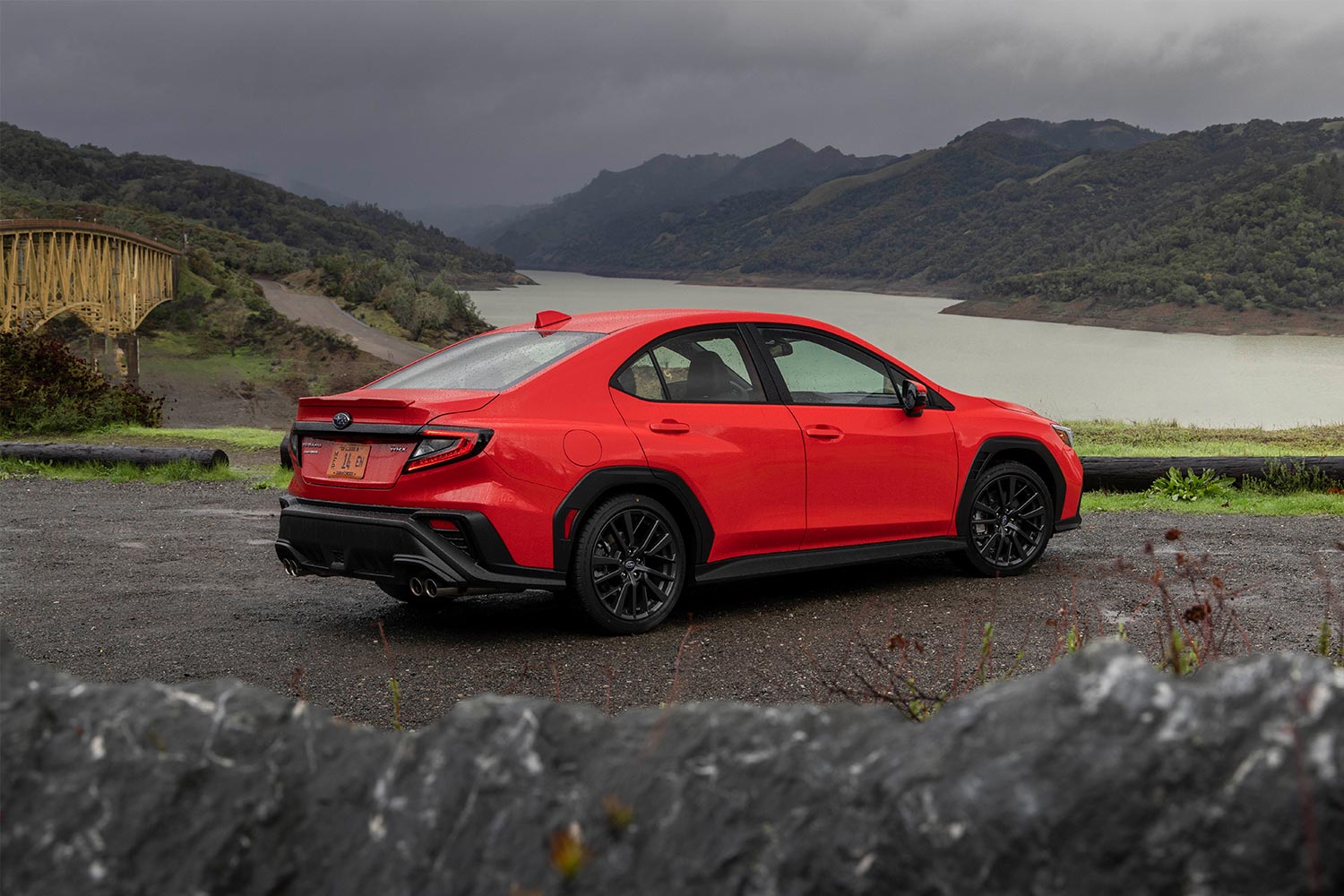
The Logic Behind CVT
This isn’t the first automatic WRX, nor even the only one with a continuously-variable transmission. Subaru has leaned hard on its CVT technology in recent years as an effective crutch for mitigating the fuel-sapping effects of the standard all-wheel-drive system that graces all but one of the vehicles for sale in its showrooms.
This type of automatic doesn’t rely on traditional gears, but instead uses a system of pulleys that are able to keep engine speed relatively stable while shuffling an unending number of “ratios” in the background, even while accelerating or decelerating. Pegging the WRX’s revs at specifically-programmed points ostensibly gives Subaru a pair of advantages when shaping the sedan’s performance.
As with elsewhere in the lineup, it seemingly allows the company to lock in the most efficient operating mode possible and then use that for EPA testing purposes, lowering the car’s advertised consumption (and helping the company’s overall fleet average). Still, that’s a pretty academic concern for the average seeker of rally car-derived, all-wheel-drive powerslide thrills that the WRX tends to attract. Of greater interest is the promise that a CVT makes to pin a turbocharged engine at maximum boost without the need to constantly shift gears. In theory — for straight line launches, at least — this provides the most direct access to the drivetrain’s power band, and thus helps heap on the speed.
Review: The Toyota GR86 Is One of the Last Affordable Sports Cars. Does Anyone Care?
In an age of overwhelming acceleration, this coupe is more about characterManual vs. Automatic
In practice, at least one of these two promises made by the 2023 Subaru WRX is borne out in the real world. A stopwatch reveals that the CVT-equipped car is definitely quicker to 60 mph from a dead stop, although it’s a question of a tenth of a second or two. Drag racers will take note, however, that the manual will eke out a win over a full quarter-mile stretch, where the human factor involved in shifting plays less of a role. Both cars feature the same 2.4-liter turbocharged four-cylinder engine, which generates 271 horsepower and 258 lb-ft of torque.
While a stoplight surge might be in the cards with the automatic WRX, the car’s fuel economy doesn’t live up to expectations. In fact, according to the EPA, the CVT actually drops efficiency by a single mile per gallon on the highway as compared to the clutch-equipped sedan. This flies in the face of the CVT magic executed by Subaru with the similarly-sized Impreza, which for 2023 is considerably more frugal when equipped with its continuously-variable setup versus its five-speed manual.
In my time with the vehicle, I found the WRX’s fuel consumption to be even worse than the 21 mpg combined average found on its window sticker. The reason was easy enough to ascertain: Although the CVT offers a lightning leap forward off the line, while underway it displays a frustrating inability to keep up with the four-cylinder engine’s power band. This leads to all sorts of full-throttle hemming and hawing as the transmission yo-yo’s its way to targeting maximum output, even when set to its “Sport #” (Sport Sharp) mode.
To combat this sluggishness at speed, Subaru built a series of “virtual” gear ratios into the CVT that can be accessed by way of steering wheel-mounted paddles. While they do offer the opportunity for your human brain to outthink the laggardly ghost in the WRX’s machine, it’s a far less immediate shifting experience than what is found in even a traditional torque converter automatic.
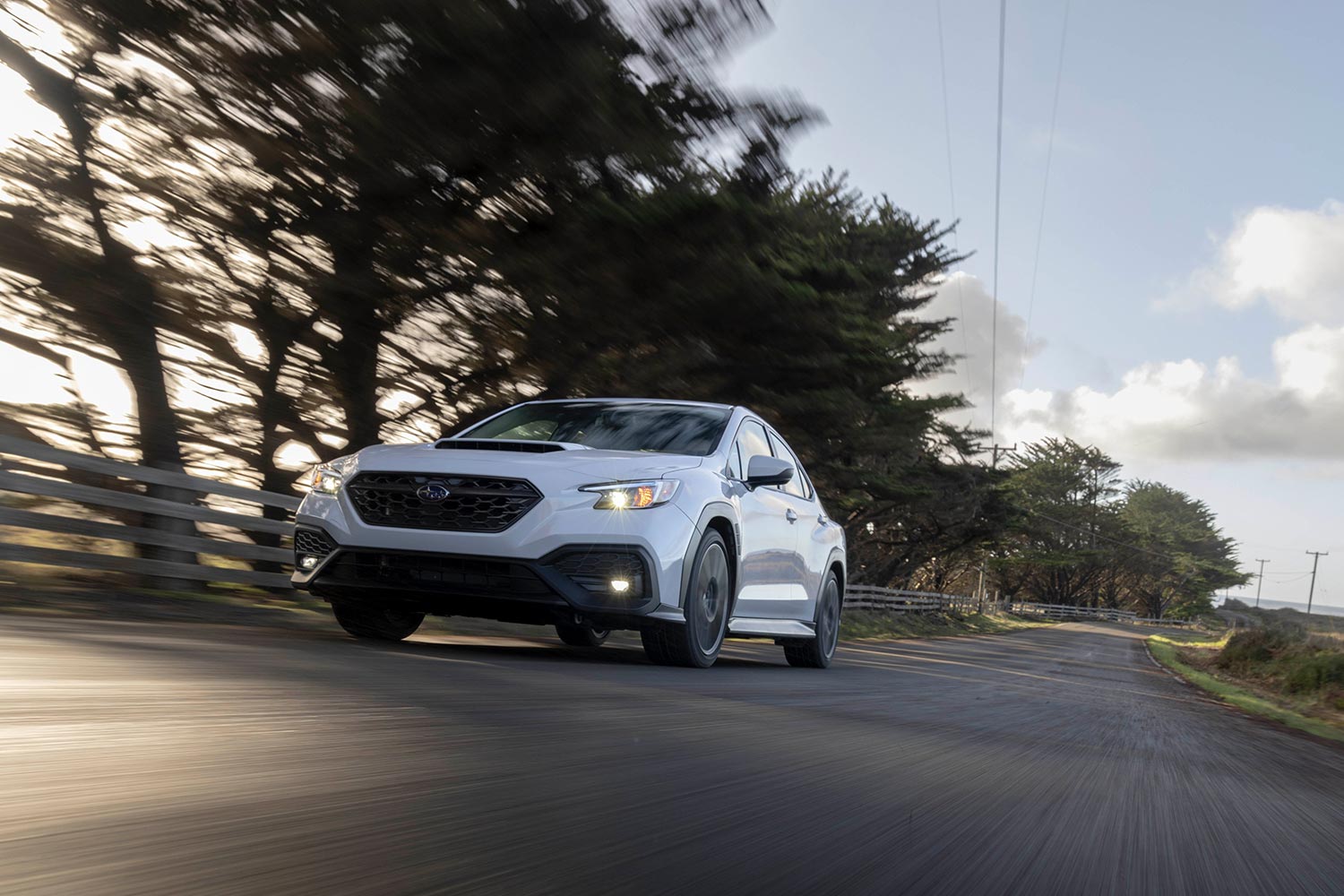
And the WRX Winner Is…
Selecting the 2023 Subaru WRX’s continuously-variable automatic transmission renders the vehicle’s entire driving experience decidedly dull. Even in the face of the sedan’s competent chassis and reasonable amounts of all-wheel-drive grip, there’s little impetus to explore the car’s limits due to the soggy character of its CVT (an $1,850 option-to-avoid on the base model’s $31,000 order sheet, sadly standard with the range-topping $43,000 GT trim).
In its revised and automated form, the WRX is a completely OK commuter, but a pale shadow of what one expects from a sports sedan. Think of it as a slightly-smaller version of the midsize Subaru Legacy family sedan, a model that packs a similar turbo-and-transmission package without any of the WRX’s performance pretensions. Neither the Legacy nor the WRX CVT are particularly compelling compared to their competitive set, which for the latter includes luminaries such as the Hyundai Elantra N (whose own automatic uses significantly speedier shifting technology) and the quicker (albeit more expensive) Volkswagen Golf R. On top of that, the additional safety gear made possible by the transmission often comes across as more intrusive than helpful.
It’s hard to imagine the six-speed version of the Subaru WRX feeling as attenuated as its automatic sibling. It’s also difficult to understand why anyone would order such a milquetoast version of what has traditionally been a star among small performance sedans. There’s nothing here to recommend paying more for the self-shifting option when a world of infinitely more interesting driving awaits those who stick with the WRX’s more affordable third pedal.
This article was featured in the InsideHook newsletter. Sign up now.
